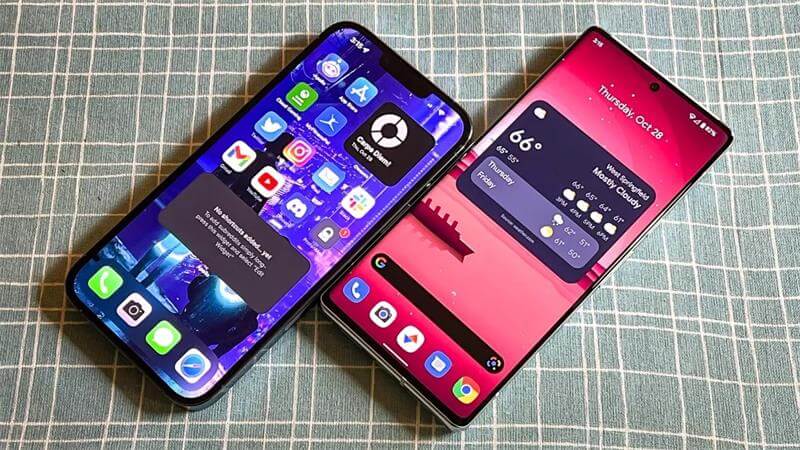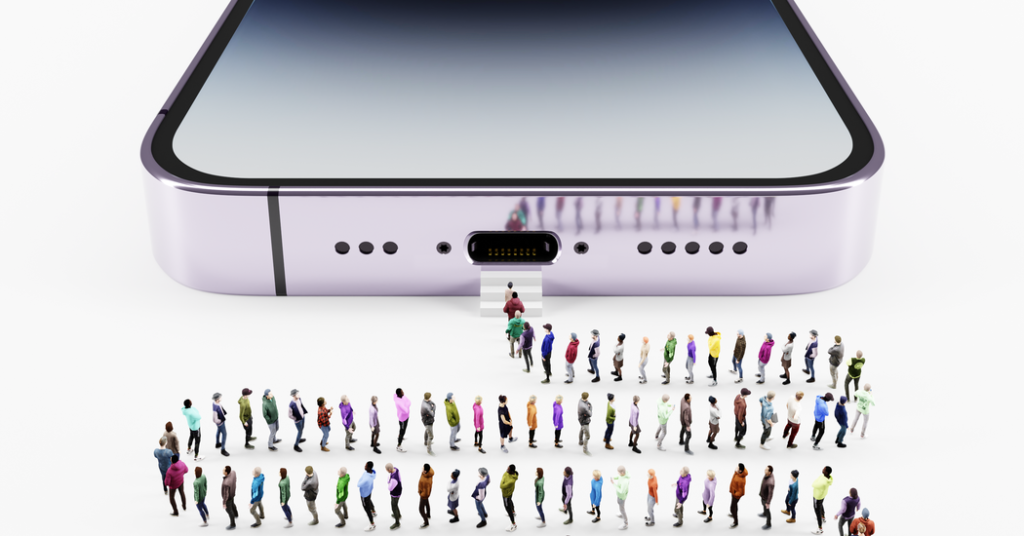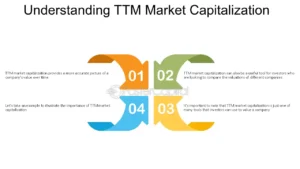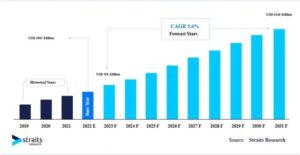3 Reasons Why iPhone is Better Than Android

In the world of smartphones, there has always been a fierce rivalry between two major players: iPhone and Android. While both have their loyal fan bases, there are undeniable advantages that set the iPhone apart from Android devices. In this article, we will delve into the top three reasons why the iPhone reigns supreme over its Android competitors.
iPhone vs. Android: The Ultimate Showdown
Design and Build Quality
When it comes to design and build quality, the iPhone stands head and shoulders above Android devices. Apple has always been known for its sleek and elegant designs, and the iPhone is no exception. From the premium materials used to the attention to detail in every aspect of the device, the iPhone exudes luxury and sophistication.
On the other hand, Android devices come in a wide range of designs and build qualities, ranging from budget-friendly plastic models to high-end metal and glass constructions. While there are certainly some well-designed Android phones on the market, they often lack the consistency and refinement found in iPhones.
In terms of durability, iPhones have been proven to withstand drops and accidents better than most Android devices. With sturdy construction and robust materials, iPhones are less prone to damage and tend to last longer than their Android counterparts.
| iPhone | Android |
|---|---|
| Premium materials and sleek design | Wide range of design options |
| Consistent and refined aesthetics | Varying build qualities |
| Superior durability and longevity | Prone to damage and shorter lifespan |
User Experience
One of the key reasons why the iPhone is considered superior to Android is the user experience it offers. Apple’s iOS operating system is known for its intuitive interface, smooth performance, and seamless integration with other Apple devices and services. The simplicity and ease of use of iOS make it a favorite among users who value a hassle-free smartphone experience.
In contrast, Android devices can be more complex and fragmented due to the multitude of manufacturers and customizations available. While some users appreciate the flexibility and customization options that Android offers, others find it overwhelming and confusing. The lack of uniformity in the user experience across different Android devices can also be a source of frustration for users.
Additionally, iPhones receive regular software updates directly from Apple, ensuring that users have access to the latest features, security patches, and performance improvements. This level of support and commitment to software updates is unmatched in the Android ecosystem, where updates are often delayed or dependent on the manufacturer and carrier.
- iOS Advantages
- Intuitive interface and smooth performance
- Seamless integration with other Apple devices and services
- Regular software updates for feature enhancements and security
- Android Challenges
- Complex and fragmented user experience
- Lack of uniformity across different devices
- Inconsistent software updates and support
App Ecosystem
Another compelling reason to choose an iPhone over an Android device is the superior app ecosystem offered by Apple. The Apple App Store is renowned for its curated selection of high-quality apps that are optimized for iOS devices. Developers often prioritize iOS when releasing new apps and updates, resulting in a richer and more diverse app library for iPhone users.
While the Google Play Store also offers a vast array of apps for Android users, the quality and optimization of these apps can vary significantly. Some apps may perform better on certain Android devices than others, leading to a less consistent user experience. Additionally, the open-source nature of Android can make it more susceptible to malware and security threats compared to the closed ecosystem of iOS.
For users who rely heavily on apps for productivity, entertainment, and communication, the iPhone provides a more reliable and secure platform to access and enjoy a wide range of high-quality apps.
- Apple App Store
- Curated selection of high-quality apps
- Optimized for iOS devices
- Rich and diverse app library
- Google Play Store
- Vast array of apps with varying quality
- Inconsistent performance across different devices
- Susceptibility to malware and security threats
Unveiling the Superiority: 3 Reasons Why the iPhone Reigns Supreme

Performance and Hardware
One of the standout features of the iPhone that sets it apart from Android devices is its exceptional performance and hardware capabilities. Apple’s custom-designed A-series chips consistently outperform the competition in terms of speed, efficiency, and graphics performance. Whether you’re multitasking, gaming, or editing photos and videos, the iPhone delivers a smooth and responsive experience without lag or slowdowns.
In comparison, Android devices are powered by a wide range of processors from different manufacturers, leading to inconsistencies in performance and optimization. While flagship Android phones may offer impressive specs on paper, they often struggle to match the fluidity and responsiveness of iPhones in real-world usage scenarios.
The tight integration between Apple’s hardware and software also contributes to the superior performance of the iPhone. By controlling both the design of the iPhone and the development of iOS, Apple is able to optimize the user experience and maximize the capabilities of its devices.
- iPhone Performance
- Exceptional speed, efficiency, and graphics performance
- Smooth and responsive user experience
- Tight integration between hardware and software
- Android Challenges
- Inconsistencies in performance and optimization
- Struggles to match the fluidity of iPhones
- Lack of tight integration between hardware and software
Camera Quality
Another area where the iPhone excels compared to Android devices is camera quality. Apple has consistently raised the bar for smartphone photography with each new generation of iPhones, offering advanced camera systems that deliver stunning images and videos. The combination of cutting-edge hardware, sophisticated image processing algorithms, and intuitive camera software makes the iPhone a top choice for mobile photographers and videographers.
While many Android devices boast impressive camera specs and features, the overall image quality and consistency may not always measure up to the standards set by the iPhone. Factors such as color accuracy, low-light performance, dynamic range, and image stabilization play a crucial role in determining the quality of smartphone photos and videos, where the iPhone consistently shines.
Apple’s dedication to innovation and pushing the boundaries of mobile photography has resulted in features like Night mode, Deep Fusion, and ProRAW, setting a new standard for smartphone cameras and inspiring creativity among users.
- iPhone Camera
- Advanced camera systems for stunning images and videos
- Cutting-edge hardware and sophisticated image processing
- Features like Night mode, Deep Fusion, and ProRAW for enhanced photography
- Android Cameras
- Impressive specs but inconsistent image quality
- Varied performance in color accuracy, low-light conditions, and stabilization
- Lack of unified approach to camera innovation and features
Privacy and Security
Privacy and security have become increasingly important considerations for smartphone users, and this is another area where the iPhone outshines Android devices. Apple has made privacy a core tenet of its product philosophy, implementing robust security measures and data protection features to safeguard user information and ensure a secure digital environment.
With features like Face ID, Touch ID, end-to-end encryption, and App Tracking Transparency, Apple puts user privacy front and center, giving users greater control over their personal data and online activities. The company’s strict app review process and commitment to user privacy have earned it a reputation as a trustworthy custodian of user information.
In contrast, Android devices have faced criticism for their perceived vulnerabilities to malware, data breaches, and privacy intrusions. The fragmented nature of the Android ecosystem, with multiple manufacturers and versions of the operating system in circulation, can make it challenging to maintain consistent security standards across all devices.
- iPhone Privacy
- Robust security measures and data protection features
- User-centric approach to privacy with features like Face ID and end-to-end encryption
- Trustworthy reputation as a guardian of user information
- Android Security
- Vulnerabilities to malware, data breaches, and privacy intrusions
- Fragmented ecosystem with varying security standards
- Challenges in maintaining consistent privacy protections across devices
iOS vs. Android: Uncovering the iPhone’s Unrivaled Advantages
Customer Support and Service
One of the often-overlooked aspects of choosing a smartphone is the level of customer support and service provided by the manufacturer. In this regard, Apple sets itself apart from Android device makers by offering unparalleled customer support through its Apple Stores, online resources, and AppleCare services.
Apple customers have access to a vast network of retail stores where they can receive in-person assistance, troubleshooting, and repairs for their devices. The Genius Bar at Apple Stores is staffed by knowledgeable experts who can address a wide range of issues and provide personalized solutions to ensure customer satisfaction.
Additionally, Apple’s online support resources, including the Apple Support website and Apple Support app, offer comprehensive guides, tutorials, and troubleshooting tools to help users resolve common issues and get the most out of their devices. The AppleCare service provides extended warranty coverage, technical support, and repair services for added peace of mind.
In comparison, Android users may have to rely on third-party service providers or contact the device manufacturer directly for support, which can vary in quality and availability. The lack of a unified support system across the Android ecosystem can lead to inconsistent experiences for users seeking assistance with their devices.
- Apple Customer Support
- Unparalleled customer service through Apple Stores and online resources
- Knowledgeable experts at the Genius Bar for in-person assistance
- Comprehensive support tools and AppleCare services for extended coverage
- Android Support
- Reliance on third-party service providers or device manufacturers for support
- Varying quality and availability of support services
- Lack of unified support system across the Android ecosystem
Accessories and Ecosystem
The Apple ecosystem is a key selling point for many iPhone users, offering a seamless and integrated experience across a range of devices and services. From Mac computers to Apple Watch, iPad, AirPods, and HomePod, Apple products work together harmoniously to enhance productivity, creativity, and connectivity for users.
Accessories such as AirPods, AirTag, MagSafe chargers, and Apple Pencil are designed to complement and extend the functionality of iPhones, providing additional convenience and versatility. The tight integration between Apple devices allows for seamless sharing of content, continuity of tasks, and synchronization of data, making the overall user experience more cohesive and streamlined.
In contrast, the Android ecosystem lacks the same level of cohesion and integration found in the Apple ecosystem, as devices from different manufacturers may not always work seamlessly together. While there are third-party accessories and services available for Android users, the lack of a unified ecosystem can limit the interoperability and synergy between devices.
- Apple Ecosystem
- Seamless integration across a range of Apple devices and services
- Complementary accessories for enhanced functionality and convenience
- Cohesive user experience with seamless sharing and synchronization
- Android Ecosystem
- Limited cohesion and integration between devices from different manufacturers
- Third-party accessories and services may not offer the same level of compatibility
- Challenges in achieving seamless interoperability and synergy between devices
Environmental Responsibility
Apple has made significant strides in recent years to reduce its environmental impact and promote sustainability throughout its product lifecycle. The company has committed to using renewable energy sources, reducing carbon emissions, and minimizing waste in its manufacturing processes and supply chain operations.
Through initiatives like Apple Trade In, Apple Renew, and Apple GiveBack, the company encourages customers to recycle their old devices responsibly and participate in programs that promote reuse and recycling of electronic products. Apple’s focus on product longevity, material recycling, and energy efficiency reflects its dedication to environmental stewardship and corporate social responsibility.
In comparison, the environmental practices of some Android device manufacturers have come under scrutiny for their reliance on non-renewable resources, hazardous materials, and unsustainable production methods. While efforts are being made to improve sustainability and eco-friendliness in the Android ecosystem, Apple’s leadership in environmental responsibility sets a high standard for the industry.
- Apple Sustainability
- Commitment to renewable energy, carbon reduction, and waste minimization
- Recycling programs like Apple Trade In and Apple Renew for responsible disposal
- Emphasis on product longevity, material recycling, and energy efficiency
- Android Sustainability
- Criticisms of non-renewable resources, hazardous materials, and unsustainable practices
- Efforts to improve sustainability and eco-friendliness in the industry
- Apple’s leadership in environmental responsibility sets a high standard
iPhone Dominance: 3 Key Factors Behind Its Triumph Over Android

Brand Reputation and Recognition
The Apple brand has achieved global recognition and acclaim for its innovative products, cutting-edge technology, and iconic design aesthetics. The iPhone, in particular, has become synonymous with premium quality, reliability, and user satisfaction, earning a loyal following of enthusiasts and fans around the world.
Apple’s marketing prowess and brand image have played a significant role in shaping consumer perceptions and preferences, positioning the iPhone as a status symbol and aspirational product for many users. The allure of owning an iPhone extends beyond its features and specifications to encompass a sense of belonging to a community of like-minded individuals who appreciate style, sophistication, and performance.
In contrast, Android devices are manufactured by a diverse array of companies with varying levels of brand recognition and reputation. While some Android brands have gained popularity and market share, they may not carry the same cachet or prestige as the Apple brand, particularly among consumers who value brand loyalty and identity.
- Apple Brand
- Global recognition and acclaim for innovative products and design aesthetics
- iPhone synonymous with premium quality, reliability, and user satisfaction
- Marketing prowess and brand image contribute to status symbol appeal
- Android Brands
- Diverse manufacturers with varying levels of brand recognition
- Popularity and market share may not equate to the same prestige as Apple
- Challenges in establishing brand loyalty and identity among users
Software and Services Integration
Apple’s ecosystem of software and services is a key differentiator that sets the iPhone apart from Android devices. The seamless integration between iOS, iCloud, iTunes, and other Apple services creates a cohesive and interconnected user experience that extends beyond the device itself. Users can easily sync their data, media, and content across multiple devices and platforms, enhancing productivity and convenience.
Features like Handoff, Continuity, AirDrop, and Universal Clipboard enable users to seamlessly transition between devices, share files effortlessly, and collaborate with others in real time. The tight integration between hardware, software, and services in the Apple ecosystem fosters a sense of unity and coherence that enhances the overall user experience.
In contrast, Android devices may offer similar features and services, but the level of integration and seamlessness may vary depending on the manufacturer and software version. While Google services like Gmail, Google Drive, and Google Photos are widely used on Android devices, they may not always provide the same level of integration and synergy found in the Apple ecosystem.
- Apple Software Integration
- Seamless integration between iOS, iCloud, iTunes, and other Apple services
- Cohesive user experience with easy data syncing and content sharing
- Features like Handoff, Continuity, and AirDrop for seamless transitions and collaboration
- Android Services
- Varying levels of integration and seamlessness depending on manufacturer and software version
- Popular Google services but potential limitations in integration
- Challenges in achieving the same level of unity and coherence as the Apple ecosystem
Long-Term Value and Resale
One of the enduring advantages of owning an iPhone is its long-term value and resale potential compared to Android devices. Apple products are known for their high resale prices and strong demand in the secondary market, thanks to factors like brand loyalty, perceived quality, and consistent software support.
Users who invest in an iPhone can expect to recoup a significant portion of their initial investment when reselling or trading in their device for a newer model. The premium pricing of iPhones at launch is offset by their strong resale value, making them a more cost-effective choice in the long run for budget-conscious consumers.
In contrast, Android devices generally depreciate faster and command lower resale prices due to factors like market saturation, brand fragmentation, and inconsistent software updates. While there are exceptions among flagship Android phones from popular brands, the overall trend favors iPhones in terms of retaining value and attracting buyers in the pre-owned market.
- iPhone Value
- High resale prices and strong demand in the secondary market
- Brand loyalty, perceived quality, and consistent software support contribute to value retention
- Cost-effective choice in the long run for budget-conscious consumers
- Android Resale
- Faster depreciation and lower resale prices compared to iPhones
- Market saturation, brand fragmentation, and software update inconsistencies impact value
- Exceptions among flagship Android phones but overall trend favors iPhones
The Apple Advantage: 3 Compelling Reasons to Choose iPhone Over Android
Software Updates and Longevity
One of the most compelling reasons to choose an iPhone over an Android device is the consistent software updates and long-term support provided by Apple. iPhones typically receive software updates for five to six years after their initial release, ensuring that users have access to the latest features, security patches, and performance enhancements.
This level of software support is unmatched in the Android ecosystem, where devices from different manufacturers may receive limited or irregular updates, leading to fragmentation and obsolescence. The timely delivery of iOS updates by Apple helps to prolong the lifespan of iPhones and maintain their performance and security over time.
In addition, Apple’s commitment to environmental sustainability includes efforts to extend the life of its products through software optimizations and performance enhancements, further enhancing the value proposition for iPhone users. By prioritizing software updates and longevity, Apple demonstrates a commitment to customer satisfaction and user experience that sets the iPhone apart from its Android counterparts.
Security and Privacy
Another significant advantage of choosing an iPhone over an Android device is the emphasis on security and privacy in the iOS ecosystem. Apple has built a reputation for prioritizing user data protection and device security, implementing robust encryption measures and stringent app review processes to safeguard user information.
iOS devices benefit from regular security updates and patches that help mitigate vulnerabilities and protect against malware and cyber threats. The closed nature of the iOS platform, with strict control over app distribution through the App Store, adds an extra layer of security compared to the more open Android ecosystem.
For users concerned about privacy and data security, the iPhone offers a compelling solution with features like Face ID, Touch ID, and end-to-end encryption for messaging and communication. By prioritizing security and privacy, Apple instills confidence in iPhone users and reinforces the brand’s commitment to protecting user data.
Customer Support and Service
The third pillar of the Apple advantage lies in the company’s renowned customer support and service offerings. Apple’s commitment to customer satisfaction is exemplified through its extensive network of retail stores, online support resources, and AppleCare services that provide assistance and solutions to users worldwide.
iPhone users benefit from access to personalized support, technical expertise, and repair services through Apple’s retail locations and authorized service providers. The convenience of scheduling appointments, receiving in-person assistance, and accessing comprehensive warranty coverage sets Apple apart in terms of customer service excellence.
In contrast, Android users may encounter challenges in obtaining consistent and reliable customer support due to the fragmented nature of the ecosystem and the diverse array of manufacturers and service providers. The cohesive and integrated approach to customer support adopted by Apple enhances the overall ownership experience for iPhone users and reinforces the brand’s commitment to customer satisfaction.
Conclusion
In the ultimate showdown between iPhone and Android, the Apple advantage shines through with its unrivaled combination of innovative design, seamless integration, long-term value, software updates, security, privacy, and customer support. The iPhone’s dominance in the smartphone market is not merely a result of superior technology but also a testament to Apple’s holistic approach to product development and user experience.
As consumers weigh their options in the ever-evolving landscape of mobile devices, the Apple brand continues to stand out as a symbol of quality, reliability, and innovation. From the global recognition of the iPhone to the seamless integration of Apple services, the allure of owning an iPhone extends beyond functionality to encompass a lifestyle choice and statement of personal identity.
While Android devices offer diversity, customization, and affordability, they may not always match the premium experience and cohesive ecosystem provided by the iPhone. The Apple advantage, with its focus on software updates, security, privacy, and customer service, reinforces the appeal of the iPhone as a top choice for discerning users who value performance, longevity, and peace of mind.
In the ongoing debate between iPhone vs. Android, the scales tip in favor of the iPhone for those seeking a premium smartphone experience that transcends mere functionality to embody a lifestyle of sophistication, innovation, and excellence. As technology continues to evolve and consumer preferences shift, one thing remains clear: the iPhone reigns supreme in the realm of smartphones, setting the standard for quality, design, and user satisfaction.
Also visit for more blogs at : Top Uberduck Alternatives








